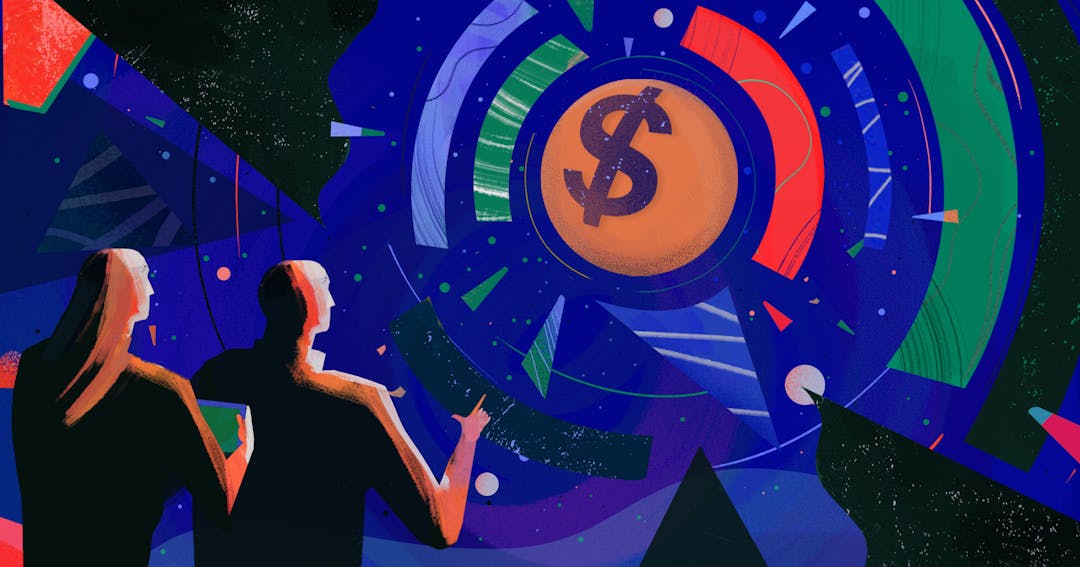How would you like to get your lunch for free? Well at the string of new Panera Cares stores (most recently in Boston) you can...technically.
These non-profit stores operate on a “pay what you can” system, where upon ordering, the cashier prints out a receipt with a suggested price. You’re then able to pay as little or as much as you want for your food. The hope is that people who can afford to pay more for their food will help those who can’t, you might be surprised to learn that all of these cafés are running at a profit.
This fact, however, becomes less surprising if you know the secret to Panera’s pricing strategy: the use of an anchor price. Essentially, that small suggested price on the receipt ends up being the price most customers end up paying with 20% actually paying more.
This powerful pricing strategy tactic works when you utilize a price to give your customer's a frame of reference for valuing your product. It often enables you to guide your customers to choose the exact product you want them to choose at the exact price you want them to buy, almost like a Jedi mind trick. Intrigued? Well then, let’s dive deeper into why anchor prices work and look at a few of the specific benefits of using them in your pricing strategy.
What is price anchoring?
Price anchoring refers to the practice of establishing a price point which customers can refer to when making decisions. Every time you see a discount with “$100 $75” , the $100 is the price anchor for the $75 sales price.

3 reasons an anchor price will keep your pricing strategy afloat
1. Price perception
A product is truly never "cheap" or "expensive"; it’s all relative. People love to compare when valuing products and having an anchor price allows them to do that. If you’re out shopping for a TV, you might look at two different models and compare their features and prices. One might be 50 inches and cost $1,000 while the other might be 48 inches and cost $600. In this case, you’ll probably think that the $600 TV offers the best value because you’re paying $400 less for a 2 inch difference. That thought process is exactly what the retailer intended for you to do. They wanted the $1,000 TV to be an anchor so the $600 TV looked like a bargain in comparison. It's a human tendency to perceive a purchase price like this, our cognitive bias is always veered towards the best reward for the least money/effort. Be sure to look for this trick next time you go shopping.
You can easily apply this tactic to your own pricing page. For example, you could create an enterprise tier for $1,000 a month offering unlimited cloud storage and a professional tier for $200 a month offering 750 gigabytes of storage. This seems extreme, but most people won’t need the unlimited storage and will end up purchasing the professional tier. They’ll sign up feeling like they just saved themselves 800 bucks, while you’ll be happy that they bought your target product. Win-win!
This tactic can also work in reverse. Imagine your company has a basic tier with only a few features and a second tier that is slightly more expensive but offers many more services. Customers will flock to your second tier because they’ll see it as a great value for only a few extra dollars. In essence, price anchoring allows you to put both a floor and a ceiling on your prices in order to guide your customers to the product you want them to buy.
2. Decision making and the power of suggestion
Humans are naturally indecisive creatures. You’ve experienced this firsthand if you’ve ever been to an ice cream stand and felt conflicted about choosing between mint chocolate chip or cookie dough. The decision can become so debilitating that some folks might even walk away because of the anxiety. Yet, a great way to prevent this flight is to label choices as the "most popular" option or the "flavor of the day."
Driving folks to a specific tier or product through the bandwagon effect is key because it further develops a frame of reference for customers. Additionally, the suggestion when mixed with the anchor price allows them to make an easy yes or no decision on paying that anchor price. More often than not, their decision will be yes because it is the simplest way for them to relieve not only their pain that the product is relieving, but also the pain of decision making. Bringing the price closer to their 'willingness to pay' price will increase the ease of purchasing it.
3. Avoiding extremes
As humans, we may like risks and extremes in theory, but most of us like to keep with the crowd and not wander to extremes. You’ll see this reflected in something as simple as buying your morning cup of coffee. Most people choose a medium coffee as opposed to a small or a large (don’t hate on me all you Starbucks aficionados out there), because it's more than the least filling option, and less than the biggest.
This kind of behavior translates especially to price anchoring as well. Essentially, you should surround the ideal option with a higher and a lower tier. The higher and lower tier on your pricing page effectively function as anchor prices, which then push your customers toward purchasing that middle tier. Of course, smaller customers will flock to the lower tier and larger customers to higher tiers, but letting prospects know that you've covered the whole spectrum pushes the main group of folks directly into your target tier.

How to implement a price anchor
The easiest and best way to implement price anchoring is to create a tiered pricing strategy (it doesn't matter if you're in software or not), providing different versions of a core product at different prices. This automatically builds in your anchor prices and allows you to take advantage of the multi-price mindset. For more on this, go read Tucker’s Multi-Price Mindset blog.
If you don’t want to do that, another potential strategy is to show your competitors’ prices on your pricing page, like Progressive Insurance does in its commercials. This gives your customers a frame of reference from which they can evaluate your product, but also risks drawing in competitive options for them to choose from. Hopefully, though, you’ll be offering the best value amongst these competitors. NOTE: It's exceptionally important not to fall into competitor pricing, so be sure to show your value relative to competitors in ways other than just pricing (features, support, etc.).
Let price anchoring be a guide for your customers
There have been examples of companies trying to implement a “pay what you can” strategy without an anchor or suggested prices. As you now know from the post, that clearly wasn't that great of an idea (most went out of business). That's why it's exceptionally important to understand customer psychology. By implementing anchors in your pricing, you’ll be able to guide your customers to the product you want them to buy. It’s another powerful perception tool in your arsenal and a great way to generate revenue and improve your pricing strategy. For more, check out this slidedeck we created:
To learn more about pricing specifics, check out our Pricing Strategy ebook, our Pricing Page Bootcamp, or learn more about our price optimization software. We're here to help!






